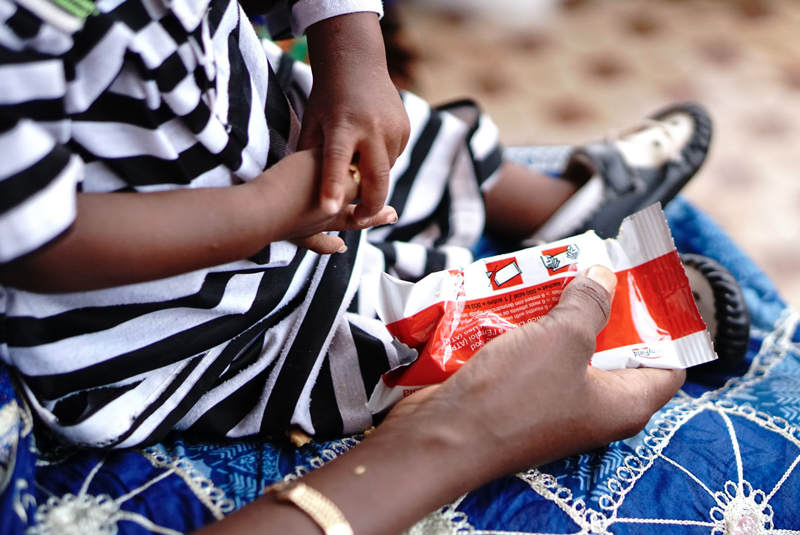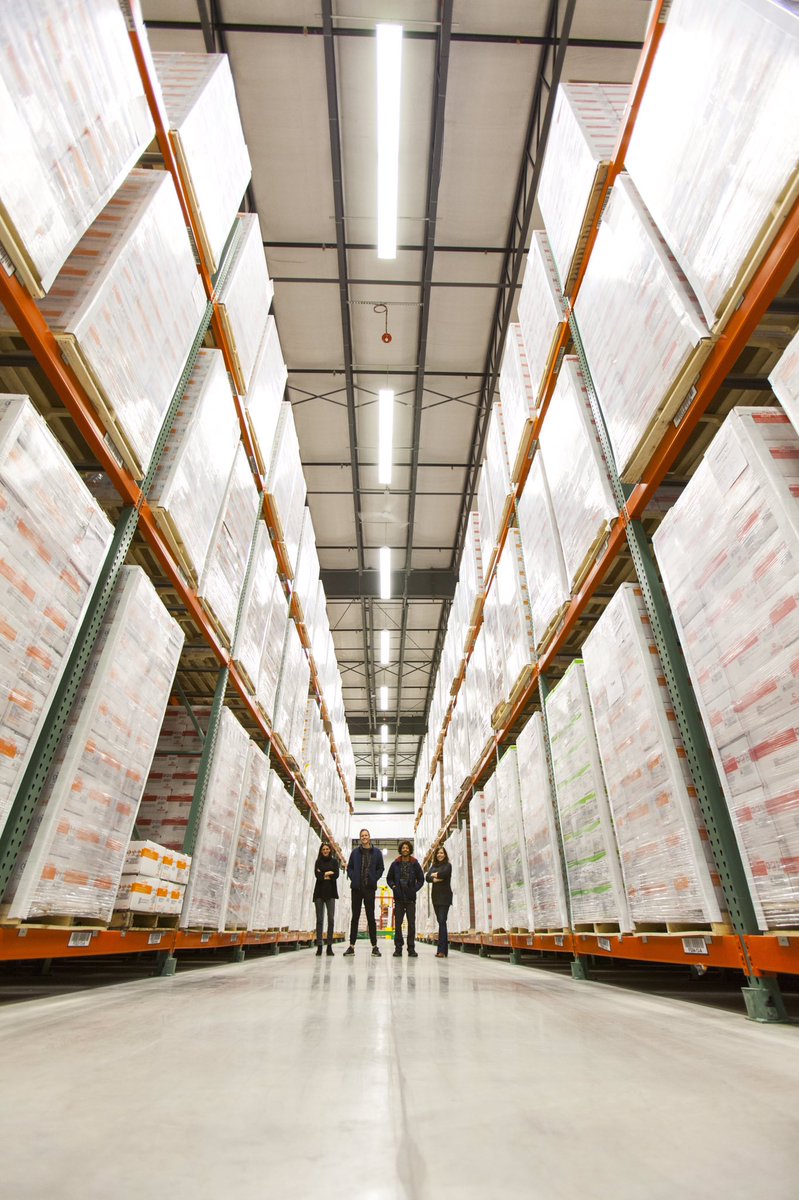Since its creation, Nutriset has worked towards a unique goal: to feed vulnerable populations in the Global South and to provide humanitarian and health actors with innovative and effective nutritional products. How should these goals, this founding spirit, be reconciled with the imperatives of a growing company, and with renewed teams? The concept of a “firm with an extended social purpose,” developed with the Mines ParisTech Scientific Management Centre, is one answer to these questions.
Read this article in Chinese | Français
Paris Innovation Review – Let’s start with your core business, and more precisely, with your products. Are these still considered food, or are they classed as drugs? Are you an industrialist or an NGO?
Adeline Lescanne-Gautier – In a way, our model, that of an agribusiness, is quite a conventional one. The company is managed as an export-oriented SME with approximately 200 employees.
Nevertheless, it is true that our purpose and our clients are quite specific.
Our clients are mainly the United Nations and large emergency NGOs such as Oxfam. We also work with smaller NGOs and governments, to distribute our products in health centers.
These clients are generally served by the pharmaceutical industry, whereas our identity clearly lies in agri-foods, more specifically in the “baby food” category. In terms of processes, we are at the highest level of food safety standards, without falling into the pharmaceutical industry, which is governed by very different rules and procedures.
Our products, however, are designed to have a significant nutritional impact. Hence, they need efficacy and acceptability studies. These may include clinical studies, but for the most part, they are programmatic studies in developing countries, and field studies that track people and groups in real life. I do not know the exact pharmaceutical protocols of clinical studies, but in our studies, many questions focus on what is happening at home.
Similarly, the effectiveness and impact of our products depend heavily on their social acceptability, which is therefore crucial and must be worked on – a little like the work marketing services would do in a more traditional company.
Let’s talk briefly about regulation: are there “marketing authorizations” in your sector, a binding licensing and certification regime?
A codex is being developed under the auspices of the United Nations, on microbiological standards and nutritional specifications (e.g. on the type of protein), but it serves as a recommendation. One of our products, however, specifically addresses a prescription for treating acute malnutrition: children do not take anything else until they are cured. Our other products complement normal diet.

It should be noted that, beyond cases of “social” malnutrition in developing countries, some of these products could be used in addition to the treatment of certain pathologies that are also present in Global North countries. Consider, for example, cases of malnutrition associated with cancers, chemotherapy, or age-related pathologies such as sarcopenia.
These are interesting avenues that do not fit into our strategy today, or into the certification regimes in which we work. However, standards and requirements are being set everywhere. I’ll come back to that. There are convergences between the markets of the North and the South.
Your products are innovative and you rely on a number of academic partnerships for their development.
In terms of research, we fund and conduct our own technological research (food and process sciences) and nutritional research, but efficiency and acceptability studies are generally carried out by independent researchers, mostly academics. In general, various disciplines are mobilized: we need to improve our understanding both of how the digestive tract works and of the criteria that determine the social acceptance of a food in a particular country. This leads us to seek expertise from sociologists and anthropologists.
However, on these latter topics, the company has also developed its own expertise. We have very few permanent employees abroad, except in the exploration phase, in new territories.
Nevertheless, we travel a lot within the framework of programs (those of the United Nations, and increasingly, those of the countries themselves). We visit many health centers, to see how children take the product and how their parents understand the product. We have also developed a network of partners, including industrial franchises, in the countries where a need exists. These franchises ensure a transfer of know-how (production, quality and more generally, agribusiness), but there is a kind of reciprocity: working with franchisees also allows us to learn.
Your action is driven by the social impact of your products, but how do you measure this impact? Has this priority led you to develop any particular way of doing things?
Our top priority is the impact on malnutrition, which generates operational questions: how do we make the product accessible on the ground, in the long term, and benefit as many children as possible. This is our top criterion, our mandate, the goal that drives our company.
In this respect, the more products we sell, the better we achieve our goal. This brings us back to the model of a traditional company, and also sets us apart, because behind quantity, there is also a meaning: this is really very important to us, it is what takes us forward.
However, our real purpose is to combat malnutrition, which also involves, more simply, economic development. For this reason, we have developed a network of franchisees called PlumpyField: it made no sense to send products from Global North countries to the Global South, and private companies help to drive development in the Global South. It is not enough just to cure: at some point, we also have to help prevent malnutrition, and this means providing jobs and improving living standards.

It is possible to see a contradiction between this long-term goal and your short-term economic interests.
Undoubtedly, but this would imply a very reductive vision of our own interests, a vision that reduces them to control and to inflating volumes, aiming exclusively to create shareholder value. Our interests also lie in the meaning we give to our work, the social and environmental impact, a certain long-term vision.
I believe that paternalistic companies and liberated companies (Nutriset is marked by the values of these two models) both have CEOs who think the same way: they embody a vision. This does not mean they cannot look at the numbers and seek good performance, but performance only makes sense when it has a purpose.
Let’s look again at the PlumpyField network. There is no secret: to combat malnutrition, governments need to get involved, and for governments to get involved, there has to be local production. When this is the case, governments can talk about the subject of malnutrition by linking it to a positive message about development, and they will also be quicker to attend to their own health system.

So we try to use as many raw materials as we can, but we reason with constraints: with these arbitrations, the product price can change, while the budgets remain the same… thus reducing the number of children treated. Ethically, it is not always easy to find a balance between different parameters such as cost price, the number of children helped and the product price… but the fundamental point is obviously always the number of children affected.
Your company has a philosophy of “doing with,” not just “doing it for.” Nevertheless, we are still dealing with industrial volumes, with 36 million children affected in five years. Specifically, much of what you produce is made “outside the walls.” This can cause quality problems. How do you manage them?
This is obviously an important issue, but when we created PlumpyField a decade ago, we thought it would be more complicated. Customers were also reluctant to buy in African countries, whereas today, it is in their strategy to buy at least 50% in programmatic countries. In fact, Unicef, the largest customer for network partners, performs its own audits, and these audits are worthwhile for all customers. Unicef has become a standardizing body, like the World Food Programme and MSF. These are the organizations that perform audits, which really makes a difference when it comes to ensuring the highest quality within the network. Alone, we would not have the means to enforce it.
So this acts as some kind of regulation?
Yes, absolutely. With an original quality model, which in some ways evokes open-source models. There is Nutriset, its partners, and now competitors, but the auditors are the same, from one audit to the next. Their requirements are becoming tougher. Every year, at the Unicef meeting in Copenhagen, they highlight the progress made in one of the factories and call for its dissemination throughout the network. In this way, quality has entered a virtuous circle: it improves from audit to audit, whether the producers belong to our network or whether they are our competitors.
We drove forward the development of a codex in this spirit. As producers, we are committed to manufacturers being present in this process. Standards cannot be created if they are not applicable.
This collective quality approach is all the more important since agri-food companies like Nutriset export their entire production and are effectively exempt from national regulations. If clients did not come and audit us, we would never be subject to any control.
The logic of sharing and cooperation has also led us to manage certain intellectual property issues. This is not an obvious subject in the humanitarian field or when working for the United Nations, because when you offer them a product… it turns into a tender! But an industrialist is not there to do R&D for its competitors either. We have patented certain processes (for example, embedding minerals and vitamins in fat). These patents were opened to Global South countries, and closed to the Global North: a subtle way of binding two worlds, that of humanitarian work and that of industry.
What you are saying here is similar to your reflection on governance with this notion of a “company with an extended social purpose,” on which you work with Mines ParisTech. How did you come to this?
These questions arose for us during the transmission phase, when Michel Lescanne, the founder, left his duties as CEO to focus on his role as president of Nutriset and the group, including the Onyx Development holding. It was also a moment of growth, when we had to organize a company that had operated in an informal way, like so many SMEs, and would soon reach 200 people.
At this time, for example, we hired an HRD. There was this need to set rules in the firm, with the additional problem that when you set a rule you also stop something, you let some opportunities escape. This raised an issue: what flexibility and what rules? To what extent can rules be more effective and when do they prevent us from being flexible?
The Chair of Theory and Methods of Innovative Design at Mines ParisTech worked on this topic. This work included an examination of what was being done in the United States, with hybrid structures that combine profit and non-profit. We created a structure of this type in the United States, to see how it worked and how it could be translated into the French system.
At the same time, we were working on the transmission: how to transmit the company, how to transmit the values. And this is the work that has made us formalize our main priorities, which have become the commitments of the extended social purpose.
And how does this status differ from an ethical charter?
A charter defines ways of doing things, but basically, it does not make the Director General responsible. What we have put in place is different. It is not an essentially decorative, complementary document, but a mandate given to the Director General.
This mandate is ethical: the priority is to be able to work towards reducing malnutrition in the world. This aim goes hand in hand with respect for the fundamental principles that have allowed the company to pursue it: freedom of thought, partnership work on research, corporate culture… all points considered essential to fulfilling our ethical mandate.
These principles have an operational counterpart, and I am accountable to them as Executive Director. Every year, I have to report to a committee on the major commitments that have been made in the context of this extended social purpose. For each commitment, I report on what has been done during the year. This is read by the members of the committee. We make comments and discuss various points, and the committee reports to the shareholders on the implementation of these commitments.
The extended social purpose allows us to coordinate operability and governance. In other words, to explore beyond the sole goodwill of the founder in order to sustain and develop an original corporate culture. It has been five years since we formalized this extended social objective; the committee was set up four years ago, and in the last year or two, I have observed in the strategy review meetings that all the directors have embraced and understood these commitments.
Their vision of the company, concerning its impact on the environment, is cross-functional enough to understand the meaning and scope of these commitments. This is new and it indicates a successful transition: for the first time, we managed to sift through all of our strategy, and everyone was in the loop, compared to only a very small circle before.
This is an interesting point when one considers the context, marked at the same time by a hand-over from the founders to a new generation, and by strong growth associated with a renewal of the personnel (40 recruitments this year, out of 200 people). In these conditions, the extended social objective is an effective way to formalize the rules of the game, to share them with everyone, and to make them explicit. It also allows newcomers to understand the strategy and philosophy of the shareholders.
I would add that it is a decisive factor in attracting young people, who are increasingly seeking meaningful work.
(Images in the articles are from internet and copyrights belong to the original authors.)


